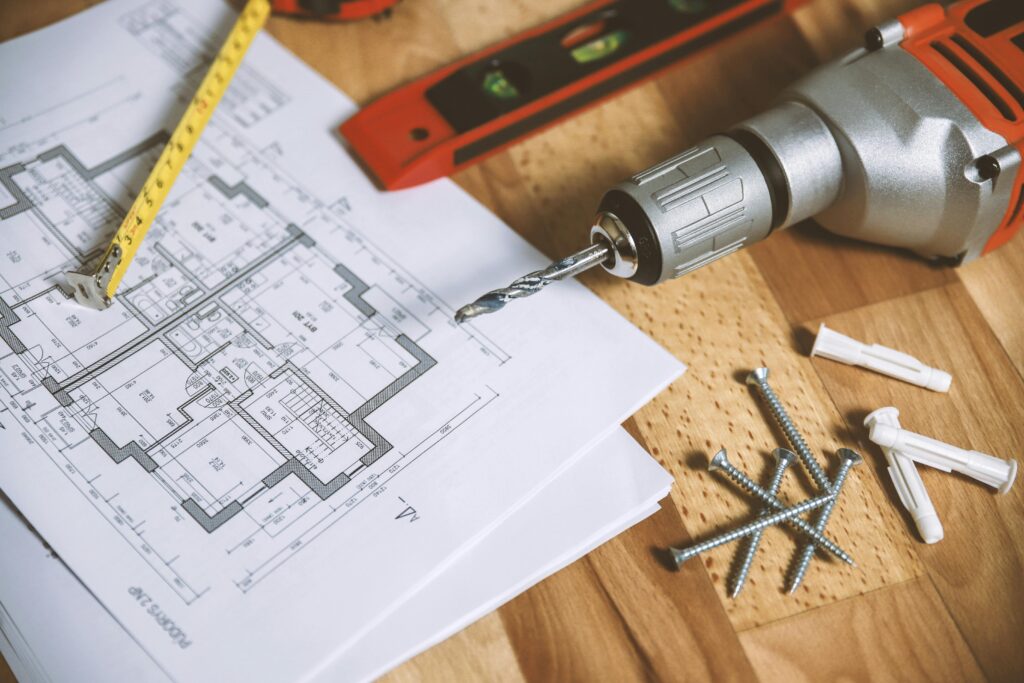Renovation services play a pivotal role in transforming outdated or damaged spaces into fresh, functional, and visually appealing environments. Whether you’re upgrading a single room or doing a full property overhaul, professional renovations breathe new life into buildings, increase property value, and improve everyday living. This article explores the different types of renovation services, their benefits, and key considerations when planning your next renovation project.
What Are Renovation Services?
Renovation services refer to the process of improving or modernizing a building’s structure, appearance, or function. This could include remodeling kitchens, updating bathrooms, replacing flooring, repairing damaged walls, or revamping entire interiors and exteriors. Unlike new construction, renovations involve working within an existing structure, which often requires a unique approach and expertise.
Why Home and Property Renovations Matter
Renovations are more than just cosmetic upgrades. They offer a wide range of benefits:
- Enhanced Comfort and Functionality: Modern layouts and updated fixtures can significantly improve how you use a space.
- Increased Property Value: Well-planned renovations boost real estate appeal and resale value.
- Energy Efficiency: New insulation, windows, or energy-efficient appliances reduce utility costs.
- Safety and Compliance: Renovations can address structural issues, plumbing leaks, or outdated electrical systems.
- Personal Expression: Updating your home allows you to reflect your taste, lifestyle, and needs.
Types of Renovation Services
Renovation services vary depending on the scope and goals of the project. Below are some of the most common categories:
1. Interior Renovations
Interior renovations focus on the inside of a property. These often include:
- Kitchen Remodeling: Upgrading cabinetry, countertops, appliances, and lighting to improve both style and function.
- Bathroom Upgrades: Installing new fixtures, vanities, bathtubs, or walk-in showers for a more modern and efficient space.
- Living Space Remodeling: Reconfiguring layouts, replacing flooring, painting, or adding built-in storage.
- Basement Finishing: Converting unused basements into functional living areas such as home theaters, gyms, or guest rooms.
2. Exterior Renovations
Exterior renovations enhance curb appeal and structural integrity:
- Roof Replacement: Ensures protection against weather and improves energy efficiency.
- Siding and Painting: Refreshes the home’s appearance and shields it from environmental damage.
- Windows and Doors: Boost energy performance, security, and aesthetics.
- Deck and Patio Renovations: Create inviting outdoor spaces for relaxation and entertainment.
3. Whole-Home Renovations
Sometimes, homes require complete transformations. Whole-home renovations often involve gutting interiors, reconfiguring layouts, upgrading systems (electrical, HVAC, plumbing), and introducing new finishes throughout.
4. Commercial Renovations
Businesses also require renovation services to attract customers and improve operations. Examples include:
- Office Remodeling: Enhancing productivity through open layouts, better lighting, and modern design.
- Retail Space Makeovers: Creating attractive storefronts and efficient interiors to boost customer experience.
- Restaurant Renovations: Updating dining areas, kitchens, and restrooms for improved service and ambiance.
The Renovation Process: Step by Step
A successful renovation project requires planning, coordination, and clear communication. Here’s a breakdown of the typical process:
Step 1: Initial Consultation and Planning
Start by meeting with a renovation contractor or designer. Discuss your goals, budget, timeline, and design preferences. This step may involve property inspections and measurements.
Step 2: Design and Estimation
Contractors or architects create design concepts and layout plans. A detailed estimate is provided based on materials, labor, and any permits needed.
Step 3: Permits and Approvals
Some renovations, especially structural or electrical work, require permits. The contractor will handle this process, ensuring compliance with local building codes.
Step 4: Demolition and Preparation
The existing structure is cleared out. This may include tearing down walls, removing old fixtures, or preparing the site for upgrades.
Step 5: Construction and Installation
This is the core renovation phase. It involves framing, electrical/plumbing work, installing finishes (tile, cabinetry, countertops), painting, and flooring.
Step 6: Finishing Touches
Final details such as lighting fixtures, hardware, and trim are installed. The area is cleaned and inspected for quality assurance.
Step 7: Final Walkthrough
The contractor conducts a walkthrough with you to ensure everything meets expectations. Any necessary adjustments are made before project completion.
Benefits of Hiring Professional Renovation Contractors
While DIY renovations are popular, hiring a professional offers distinct advantages:
Expertise and Experience
Licensed contractors understand building codes, structural integrity, and design principles. They can identify problems early and deliver high-quality work.
Time and Cost Efficiency
Professionals have access to tools, suppliers, and skilled labor that streamline the renovation process. They’re also better equipped to handle unexpected issues without delays.
Permits and Regulations
Navigating permits and legal requirements can be challenging. Contractors handle this for you, ensuring the project stays compliant.
Warranty and Accountability
Most professional services come with warranties or guarantees, giving you peace of mind that the work is reliable and long-lasting.
Renovation Trends to Consider
Home and business renovation trends are constantly evolving. Here are some popular trends to inspire your next project:
Open Concept Living
Removing walls to create larger, multifunctional spaces is a continuing trend, especially for kitchens and living rooms.
Sustainable Materials
More homeowners are opting for eco-friendly materials like bamboo flooring, recycled countertops, and energy-efficient lighting.
Smart Home Upgrades
Smart thermostats, lighting systems, and security features not only offer convenience but also increase home value.
Home Office Spaces
With remote work becoming more common, dedicated home offices or study nooks are a popular addition.
Minimalist Aesthetics
Sleek lines, neutral palettes, and clutter-free spaces define the modern minimalist approach to interior design.
Renovation Budgeting Tips
Renovations can be expensive, so it’s important to budget carefully. Here are some tips:
- Set Priorities: Focus on essential upgrades before spending on luxury features.
- Get Multiple Quotes: Compare at least three contractor estimates to get a fair deal.
- Include a Contingency Fund: Set aside 10–20% of your budget for unexpected costs.
- Avoid Over-Improving: Ensure renovations align with your neighborhood’s market value to avoid overspending.
Common Challenges and How to Overcome Them
While rewarding, renovations can come with hurdles:
Unforeseen Structural Issues
Once walls or flooring are removed, hidden problems may be revealed. Working with an experienced contractor helps anticipate and resolve these challenges quickly.
Delays and Scheduling Conflicts
Weather, material shortages, or labor availability can cause delays. Clear communication and flexible scheduling help mitigate frustration.
Budget Overruns
Costs can escalate due to change orders or unplanned repairs. Sticking to the original scope and preparing for contingencies is crucial.
How to Choose the Right Renovation Contractor
Selecting the right contractor can make or break your project. Look for:
- Licensing and Insurance: Ensure the contractor is fully licensed and insured in your area.
- Portfolio of Past Work: Ask to see examples of similar renovations.
- References and Reviews: Speak with past clients or read online reviews for insight.
- Clear Contract: Ensure the contract includes a detailed scope, payment terms, and timeline.
- Communication Skills: Choose someone who is responsive and easy to work with.
Conclusion: Invest in Your Space with Renovation Services
Renovation services offer a powerful way to upgrade your living or working environment. Whether it’s a small room makeover or a complete overhaul, investing in professional renovation services enhances comfort, efficiency, and value. With proper planning, budgeting, and the right team, your vision can become a reality.
Ready to transform your space? Reach out to a trusted renovation contractor today and start building a better tomorrow—one room at a time.



Comments